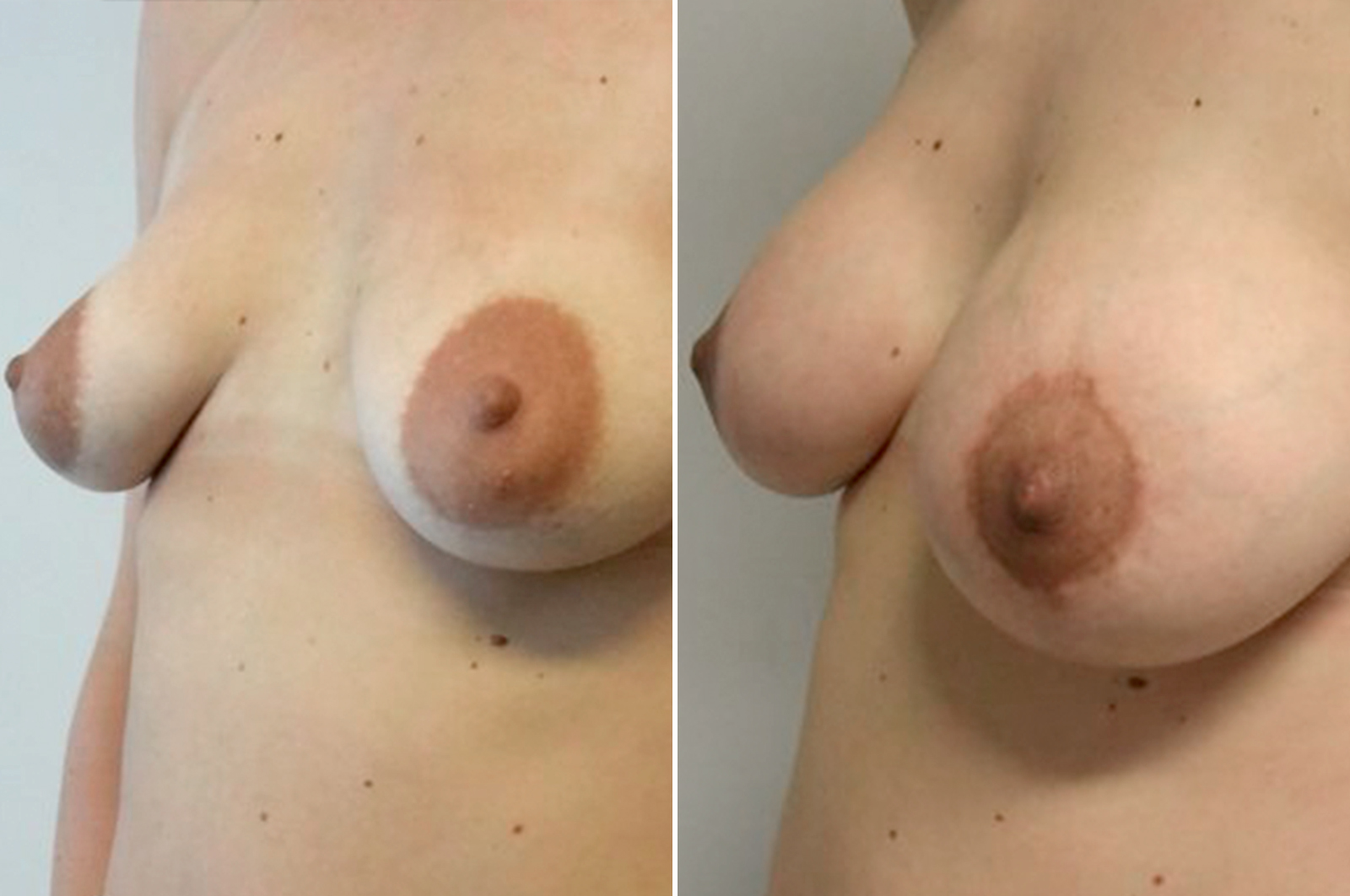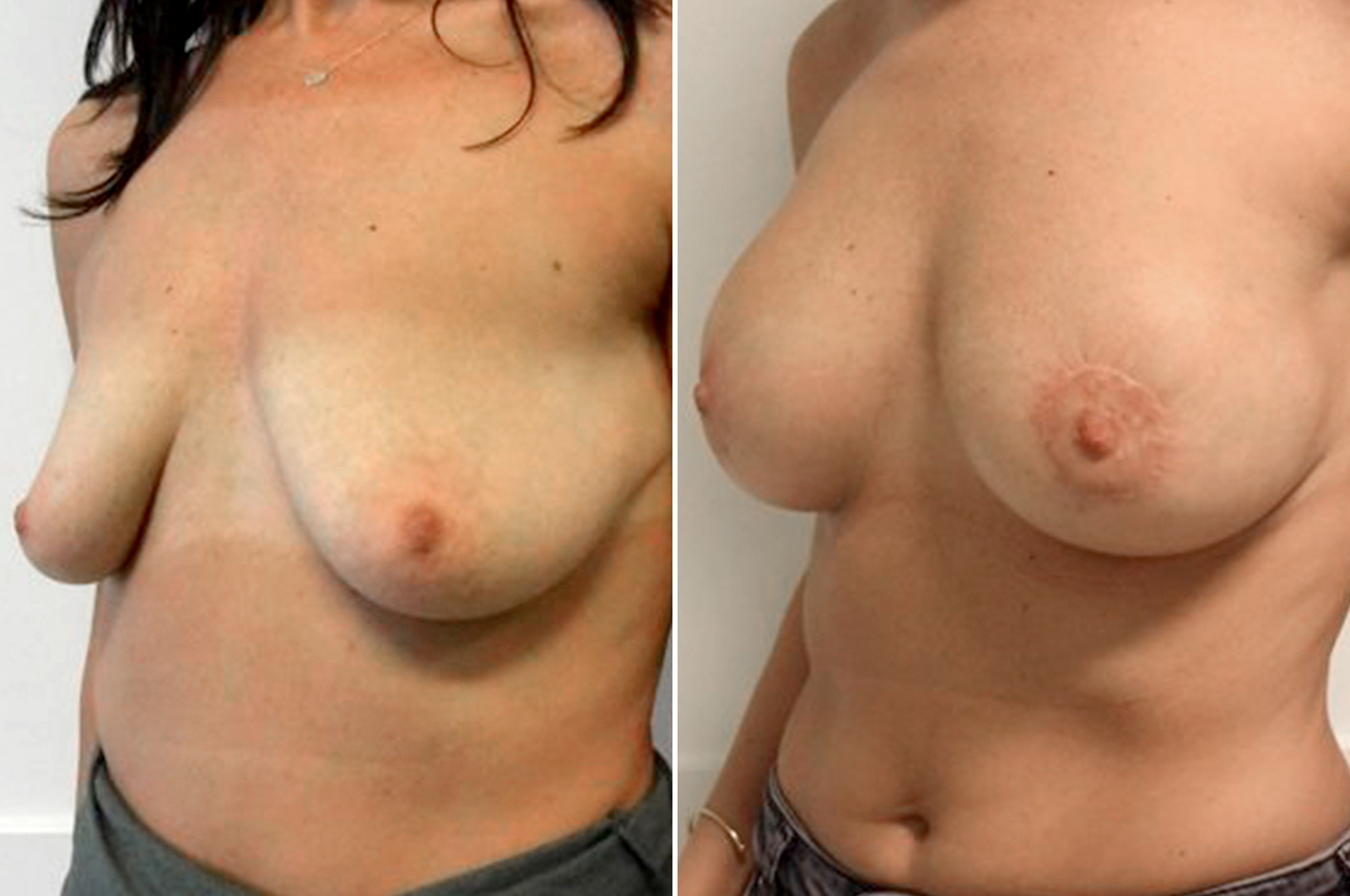Breast lift
Table of contents:
What is a breast lift?
Over the years, your breasts become saggy. This can be as a result of pregnancy, breastfeeding, losing weight, getting older etc.
A breast lift can lift and tighten them, adding volume so that they become beautiful and full again. It is often combined with a breast reduction or augmentation and the removal of excess skin. The shape and appearance of your new breasts will be carefully determined beforehand to ensure that they are proportionate to the rest of your body.

Procedure - How does a breast lift work?
- During a consultation, your surgeon will draw up your treatment plan with you. In it, you will discuss together what your expectations are, what your options are, etc.
- Before the surgery, the surgeon will make the necessary marks on the skin. You will then be put under general anaesthesia and the procedure will take an average of up to 2.5 hours.
- Depending on the extent of the breast lift, 1, 2 or 3 incisions will be made: around the areola, vertically downwards from the lower edge of the areola and/or horizontally in the natural curve. This method is also called the anchor method (after the shape of the scar). The skin is then detached from the underlying tissue.
In the case of a small breast lift, the Benelli method is sometimes used. The lift is done exclusively around the nipple area.
- The breast tissue is then moved upwards and the excess skin is removed. If necessary, a breast prosthesis may be used at this stage.
With an anchor scar, you will have 3 scars:
- 1 in the natural skin fold under the breast.
- 1 from the centre of the skin fold running vertically to the nipple
- 1 around the nipple
Our surgeon will do everything possible to keep these to a minimum.
In the case of a Benelli lift, these scars are exclusively around the nipple.
The plastic surgeon makes every effort to keep the scars as subtle as possible.
Advantages
- A breast lift restores the breasts' shape and firmness.
- It can improve your self-image and self-confidence, especially if the result is in line with your expectations.
- Clothing and undergarments may fit better.

Disadvantages or complications
Some possible complications of a breast lift may include:
- Infection
- Wound dehiscence (opening of the wound along the incision line)
- Haematoma (a build up of blood under the skin that may require removal)
- Negative reaction to anaesthetics
- Delayed wound healing
- Post haemorrhage
- Nipple necrosis
- Fat necrosis
- Prolonged wound fluid
- Asymmetry
- Nipple and skin sensation disturbances and/or changes, possibly permanent
- Permanent scars
- Damage to underlying structures
- Allergic reactions to tapes, sutures and plasters
- Pain
- Unsatisfactory aesthetic result
- Rupture of the prosthesis
- Twisting of the prosthesis
- Capsular contracture (= tightening of the scar tissue in the breast or around a prosthesis. This can occur after the surgery, but also after several years).
- Gel bleed
- We recommend that you stop smoking before the operation. Patients who smoke or use tobacco products or nicotine products (such as nicotine patches and chewing gum) at the time of surgery have an increased risk of complications such as skin necrosis and impaired wound healing.
Recovery - What can you expect after a breast uplift?
- The first few days after the procedure, your breasts and muscles will feel sore and stiff. There may also be some tightness around the treated area. Your breasts will need time to adjust to their new shape.
- We recommend that you arrange transport when you go home, driving yourself will not be possible and is strongly advised against in order to avoid complications.
- As with any surgical procedure, the treated area may be blue and swollen. Scars are often red and swollen, which is quite normal. Your body has just endured surgery and is reacting naturally.
- The breast tissue and skin around the breasts need to adapt to the new shape and this takes several weeks to months. We recommend that you wear a sports bra day and night for 6 weeks to give your tissues full support.
- Avoid strenuous exercise, sports activities and the like for the first 6 weeks.
- As soon as the wound has closed and the scabs have disappeared, you can start applying the scar cream. Do this twice a day on the closed wound; this will increase the chance of the skin healing nicely. Avoid direct sunlight or use a sun screen with a high degree of protection (e.g. SPF 50).
- The discomfort can last up to several months. It usually takes up to a year and a half for your scars to settle down. Patience and good aftercare are therefore crucial.
- adelen of complicaties
- Omdat uw huid gevoelig zal zijn voor zonlicht, voeren we deze behandeling enkel uit tussen oktober en april om zonneschade tijdens de zomer te voorkomen.
Frequently asked questions
What is the cost of body surgery?
You can find estimated prices here, after your consultation you will be informed of the exact prices of your operation. Prices are average and may vary depending on: the exact treatment or surgery needed; the exact area you want to have treated; your body type; your expectations and wishes...
We have a specific procedure to get a quote from the doctor. To receive a personalized quote, please visit the following link to see your different options.
Is there a payment plan or financing option for a surgery?
No, payments have to be made following our payment policy. It is not possible to pay for a surgery via monthly/... payments.
What is the cost of a breast lift?
You will find all the prices of our treatments and operations here.
How long does the result of a breast lift last?
It may take several weeks or even months before you see the final result of your breast uplift. The final result will of course last for several years. If protheses have been used, keep in mind that they have an expiration date.
What are the risks of a breast lift?
Any disadvantages or possible complications can be found here.
Who is a suitable candidate for a breast lift?
A breast uplift can help if you suffer from drooping or sagging breasts after pregnancy, breast feeding, weight gain or loss, ageing etc.
What is the cost of a breast reduction?
You will find all the prices of our treatments and operations here.
How long does the result of a breast reduction last?
It can take several weeks or even months before you see the final result of your breast reduction. The final result naturally remains for several years.
What are the risks of breast reduction?
All disadvantages or possible complications can be found here.
Who is a suitable candidate for a breast reduction?
A breast reduction can help if you suffer from heavy, drooping breasts after pregnancy, breast feeding, weight gain, becoming older, etc. Especially if you suffer from neck, shoulder and back pains, this procedure can bring relief.
What is the difference between a nipple correction and a nipple-areola correction?
With a nipple correction, mainly the shape of the nipple is adjusted. The areola correction involves reducing the size of the areola.
What is the cost of a nipple correction?
You will find all the prices of our treatments and operations here.
How long does the result of a nipple correction last?
Normally the result is permanent, although scars may remain slightly visible.
What are the risks of a nipple correction?
Any disadvantages or possible complications can be found here.
Who is a suitable candidate for a nipple correction?
A nipple correction aims to restore the proportions between the breast, the nipple and the areola. When a nipple has a deviant shape and is, for example, (too) large or retracted, a nipple correction may be necessary or desirable. Also when the areola (the dark area around the nipple) is too large in proportion, this can be surgically corrected.
We are doing our very best to keep this information up-to-date. In case you see anything that no longer seems accurate, or in case you have a question, please fill out the form below.
